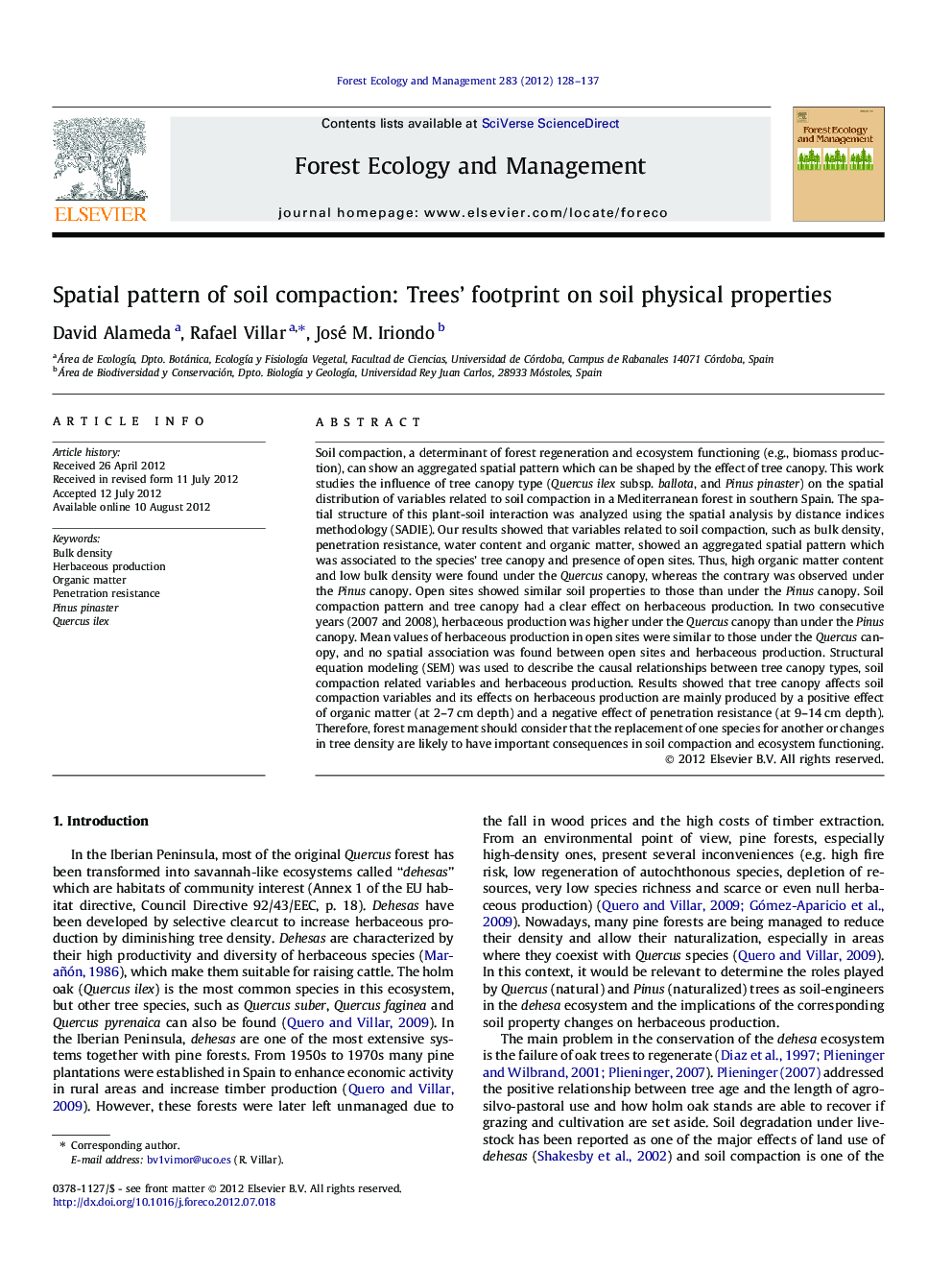| کد مقاله | کد نشریه | سال انتشار | مقاله انگلیسی | نسخه تمام متن |
|---|---|---|---|---|
| 87047 | 159229 | 2012 | 10 صفحه PDF | دانلود رایگان |

Soil compaction, a determinant of forest regeneration and ecosystem functioning (e.g., biomass production), can show an aggregated spatial pattern which can be shaped by the effect of tree canopy. This work studies the influence of tree canopy type (Quercus ilex subsp. ballota, and Pinus pinaster) on the spatial distribution of variables related to soil compaction in a Mediterranean forest in southern Spain. The spatial structure of this plant-soil interaction was analyzed using the spatial analysis by distance indices methodology (SADIE). Our results showed that variables related to soil compaction, such as bulk density, penetration resistance, water content and organic matter, showed an aggregated spatial pattern which was associated to the species’ tree canopy and presence of open sites. Thus, high organic matter content and low bulk density were found under the Quercus canopy, whereas the contrary was observed under the Pinus canopy. Open sites showed similar soil properties to those than under the Pinus canopy. Soil compaction pattern and tree canopy had a clear effect on herbaceous production. In two consecutive years (2007 and 2008), herbaceous production was higher under the Quercus canopy than under the Pinus canopy. Mean values of herbaceous production in open sites were similar to those under the Quercus canopy, and no spatial association was found between open sites and herbaceous production. Structural equation modeling (SEM) was used to describe the causal relationships between tree canopy types, soil compaction related variables and herbaceous production. Results showed that tree canopy affects soil compaction variables and its effects on herbaceous production are mainly produced by a positive effect of organic matter (at 2–7 cm depth) and a negative effect of penetration resistance (at 9–14 cm depth). Therefore, forest management should consider that the replacement of one species for another or changes in tree density are likely to have important consequences in soil compaction and ecosystem functioning.
► Soil compaction variables show an aggregated pattern related to the trees’ canopy.
► Quercus and Pinus produce a very different effect on soil compaction pattern.
► Herbaceous production is affected by the soil-trees’ canopy interaction.
► An integrative model shows how trees influence compaction and herbaceous production.
Journal: Forest Ecology and Management - Volume 283, 1 November 2012, Pages 128–137